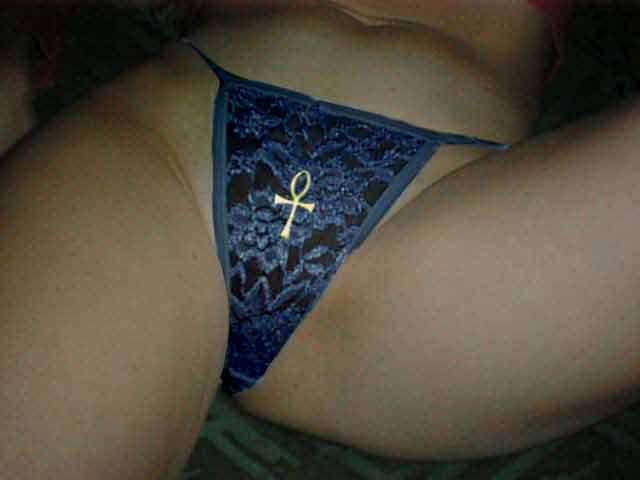 The Ankh is commonly known to mean “life”, in the language of Ancient Kemet (Land of the Blacks). Ancient Kemet was renamed Egypt by the Greeks. It is also a symbol for the power to give and sustain life. The Ankh is typically associated with natural things such as water (which was believed by Egyptians to regenerate life), air, sun, as well as with the Greek Gods, who are frequently pictured carrying an Ankh.
The Ankh is commonly known to mean “life”, in the language of Ancient Kemet (Land of the Blacks). Ancient Kemet was renamed Egypt by the Greeks. It is also a symbol for the power to give and sustain life. The Ankh is typically associated with natural things such as water (which was believed by Egyptians to regenerate life), air, sun, as well as with the Greek Gods, who are frequently pictured carrying an Ankh.
The Loop of the Ankh is said to represent the feminine discipline or the womb, while the elongated section represents the masculine discipline or the penis. These two sacred units then come together and form life. Because of its powerful appeal, the Ankh was used in various religious and cultural rituals involving royalty. In the Treasures of
Tutankhamen, the Ankh was a major artifact found in the tomb. Here it is thought the circle symbolizes eternal life and the cross below it represents the material plane. The Ankh is also called the "Crux
Ansata,” It is of Egyptian origin and appears frequently in artwork of various material and relief, depicting the Gods of that period.
The Egyptian Ankh, or Looped Cross, has for many been the symbol of humanities resurrection. In that way it shows the initiate greeting of the day with arms outstretched and head held high. One theosophical writer calls this posture the "Madonna Posture", as if we are attempting to embrace all of creation. She further states that it is also good for the thymus gland/heart area, in that it creates a feeling of openness and compassion, right where the vertical and horizontal shafts meet.
There are numerous examples that have been found that were made from metal, clay and wood. It is has been worn as an amulet to extend the life of the living and placed on a mummy to energize the resurrected spirit. The Gods and the Kings are often shown carrying the Ankh to distinguish them from mere mortals. The Ankh symbolized eternal life and bestowed immortality on anyone who possessed it. It is believed that a life energy emanating from the Ankh can be absorbed by anyone within certain proximities. An Ankh has also been used to serve as an antenna or conduit for the divine power of life that permeates the universe. The Ankh as an amulet is a powerful talisman that provides the wearer with protection from the evil forces of decay and degeneration.
The Gods, to represent the breath of life given in the after-world, have held it to the nose of a deceased King. The Ankh also resembles a key and is considered the key to eternal life after death. Its’ influence has been felt and appeared in every dynastic period and survives as an icon; possessing mystical power throughout the Coptic Christian era as well. The Ankh possessed by each God was thought to carry the power associated with that God.
back
 The Ankh is commonly known to mean “life”, in the language of Ancient Kemet (Land of the Blacks). Ancient Kemet was renamed Egypt by the Greeks. It is also a symbol for the power to give and sustain life. The Ankh is typically associated with natural things such as water (which was believed by Egyptians to regenerate life), air, sun, as well as with the Greek Gods, who are frequently pictured carrying an Ankh.
The Ankh is commonly known to mean “life”, in the language of Ancient Kemet (Land of the Blacks). Ancient Kemet was renamed Egypt by the Greeks. It is also a symbol for the power to give and sustain life. The Ankh is typically associated with natural things such as water (which was believed by Egyptians to regenerate life), air, sun, as well as with the Greek Gods, who are frequently pictured carrying an Ankh.